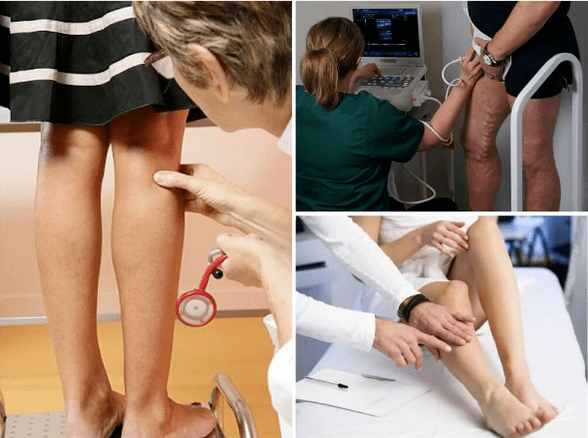
If at the end of the working day, you regularly start to injure yourself and swell your legs, and the ships in the form of blue-purple "stars" are visible on your skin, you probably have the initial stadium varicose veins.In this case, do not be afraid and, moreover, delay the visit to a phebologist.First, according to statistics, at the age of 20, around 17% of the population of Russia suffers from venous insufficiency (that is to say that they have the first conditions for the development of varicose veins), and this disease is much more common than representatives of stronger sex.And secondly, modern medicine has learned very well to face varicose veinsAnd therefore, the earlier you consult a doctor, the more you have the possibility of avoiding surgery and bypassing only therapeutic treatment methods (medicine, ointment, special elastic linen).
What is the cause of varicose veins, is it possible to avoid it and what treatment methods exist?
SO, Varicose veins - A condition in which the peripheral veins (generally on the surface of the legs under the skin) swell and the winding, acquiring the shape of swollen bluish grams.Most often, the varicose veins, accompanied by a failure of the valve and an alteration of the blood flow, which, in turn, in the most advanced cases, led to the occurrence of thromboembolia and thrombophlebiti bis (inflammation of the venous wall and clogging with a thrombus).
According to scientists, the factors causing the appearance of varicose veins may be: heredity (if one of the parents had a given disease in the family), a strong increase (decrease) of body weight, a work associated with heavy physical effort.In women, hormonal changes (for example in adolescence), pregnancy and related charges on the body can become the causes of varicose disease.The venous system becomes particularly defenseless under the influence of physical and hormonal changes.The lower it is, the more the probability of a violation of the flow of the blood of the legs and the development of a venous insufficiency.
Despite the high level of development of science and medicine, there are only three methods of treatment of varicose veins.
Medication method
The patient is prescribed a medication cure (only your attending physician can prescribe it, it is not recommended to do it yourself).Before use, carefully read the instructions to be used to be prepared for the side effects of the drug (for example, drowsiness or dizziness), and also check if you have allergies to the chemicals that compose it.The drug method is only used in the early stages of varicose veins.
Sclerotherapy
The method of the method: a special medication is introduced into the sore vein with a syringe and a needle, leading to the formation of a thrombus, which, in turn, clogs Vienna.The blood flow stops and stagnation disappears.The sclerotherapy procedure is almost painless and only takes 5 to 10 minutes.But with all the positive aspects of this method (namely the ability to do without surgery and associated consequences), sclerotherapy also has drawbacks: unfortunately, an inflammation axis can occur when the drug enters the skin), and this treatment method is generally contraindicated for patients with an increased allergic reaction.
Surgical elimination of varicose veins
It is prescribed in the most extreme cases when other treatment methods are not suitable or that the disease is too neglected.An operation is carried out, during which a painful vein is removed by a small incision on the skin.Before the operation, you will have to undergo an ultrasound duplex or a triplex scan to identify the state of the venous system as a whole and the area operated in particular.
Like sclerotherapy, the surgical method allows you to transfer the load to the flow of venous blood from surface veins to depth, while surgery does not eliminate the cause of the disease, but only eliminates its consequences.Therefore, if after the operation, a person does not follow the recommendations of a phebologist, relapses are possible.
Each of the treatment methods considered to be serious contraindications, so the doctor must decide which option suits you.To be completely confident in the accuracy of the diagnosis and the prescribed treatment, it is preferable to undergo an exam by several specialists at the same time.It should be forgotten that it is always easier to prevent disease than to treat, therefore, if you do not want to suffer from sick veins, follow the simplest recommendations, and then no variable variable.
- If you feel that your legs are tired when you go home, sit in a comfortable chair and put your legs next to the chair so that they are above the basin and that the blood leaves them.
- Do not take a too hot bath - ships develop from this.
- Wearing shoes with too high heels (greater than 8 to 10 cm) does not benefit either.
- Follow the weight.
- Direct an active lifestyle, in moderate practical quantities (for example, swimming, horse riding, cycling).























